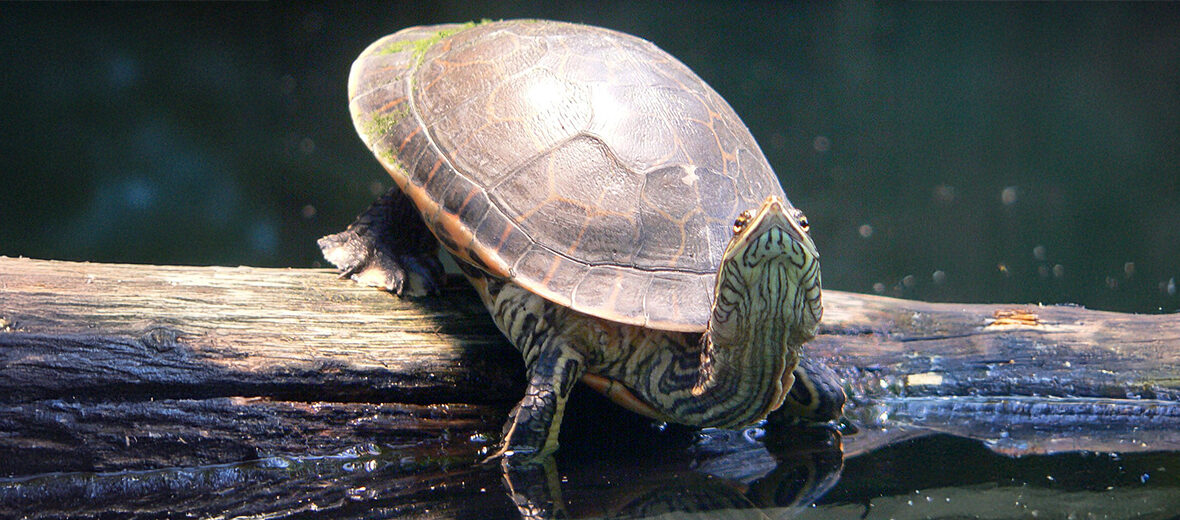
Hailing from southeastern United States it’s the chicken turtle. These critters are the only extant member of the genus Deirochelys and a member of the freshwater marsh turtle family Emydidae. These turtles face the threats of habitat loss; vehicle strike, being hit by vehicles; and predation of juveniles and eggs. However, they are abundant enough to be listed as Least Concern by the IUCN. Their population trend is listed as stable.
First the Stats…
Scientific name: Deirochelys reticularia
Weight: Up to 3.58 lbs.
Length: Up to 10.2 inches
Lifespan: Up to 24 years
Now on to the Facts!
1.) There are 3 regionally distinct subspecies (eastern, western, and Florida), that are believed to have evolved when populations became separated during past periods of glaciation.
2.) They have been around for approximately 5,000,000 years.
3.) These turtles prefer shallow, still, or slow-moving water bodies with lots of vegetation and a muddy substrate.
4.) Unlike many other aquatic turtles these critters will hibernate in the northern reaches of their range but not in the southern parts of their range.
5.) They were first described in 1801 independently by 2 French zoologists: as Testudo reticularia by Pierre André Latreille, and as Testudo reticulata by François Marie Daudin.
But wait, there’s more on the chicken turtle!
6.) Chicken turtles are diurnal (active during the day).
7.) Females lay up to 19 eggs, twice each season. Some females lay up to 4 clutches of eggs in a season.
Did you know…?
Their meat is considered palatable and was once widely sold at markets throughout the southern United States for use in turtle soup.
8.) Eggs hatch in up to 89 days, but sometimes less, based on the surrounding temperature.
9.) Crayfish, invertebrates, tadpoles, snails, spiders, water bugs, various vegetation, and carrion (dead animals) are all feasted upon.
10.) Raccoons, skunks, and snakes prey on eggs, juveniles, and adults, while fire ants attack juveniles.
But wait, there’s still more on the chicken turtle!
11.) Various parasites infest these turtles, such as the cheyletoid mite that is found in the turtle’s rectum. They are also parasitized by blood flukes obtained from eating snails.
12.) Numerous locations inhabited by these turtles are already under protection, having been designated as wildlife reserves or conservation areas. However, further preservation of wetlands, primarily temporary ones, would be beneficial in ensuring the continued stability of the population of these critters.
Now a Short Chicken Turtle Video!
Be sure to share & comment below! Also, check out the Critter Science YouTube channel. Videos added regularly!
Want to suggest a critter for me to write about? Let me know here.
Some source material acquired from: Wikipedia & IUCN
Photo credit: BS Thurner Hof




